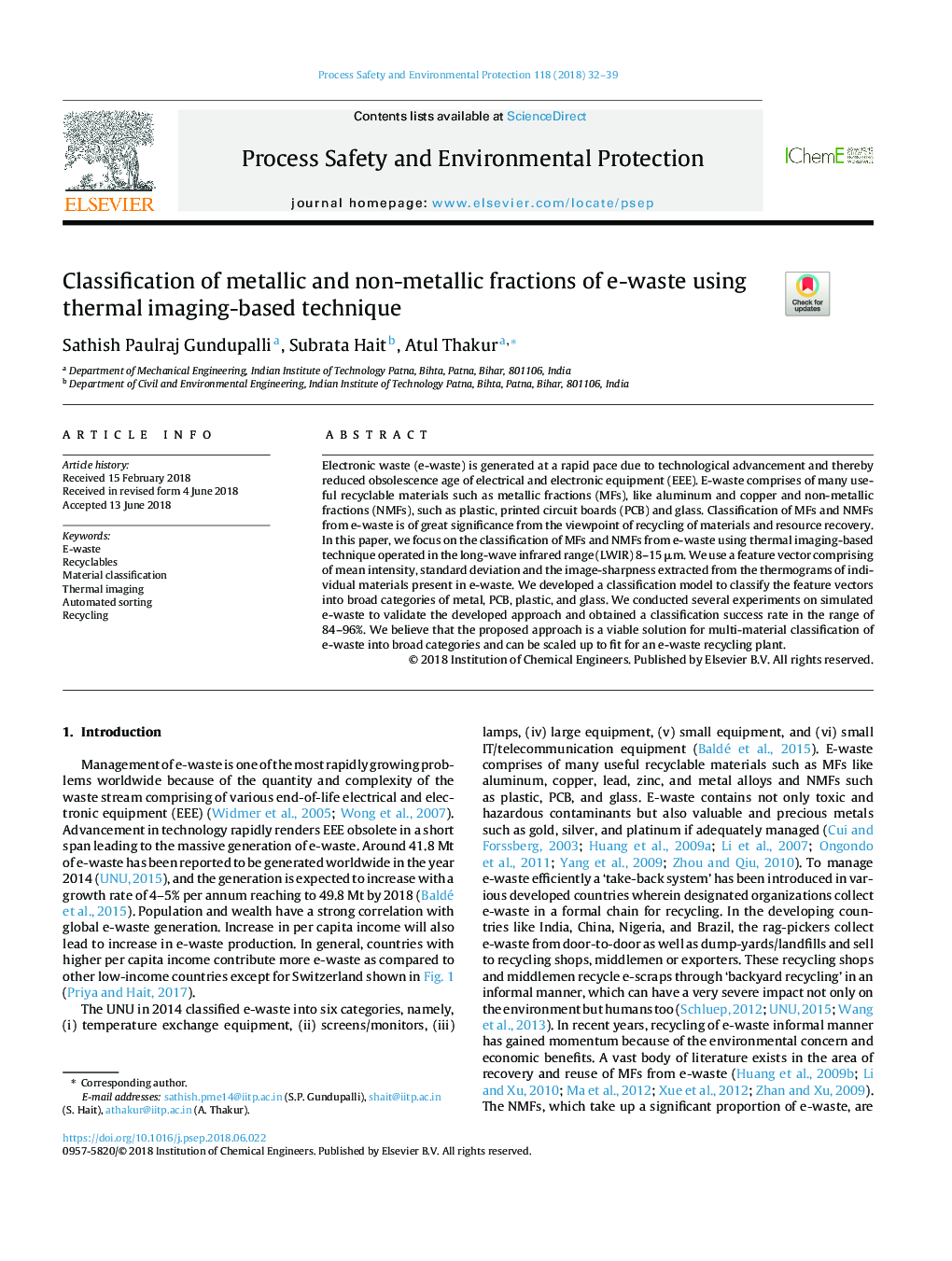| Article ID | Journal | Published Year | Pages | File Type |
|---|---|---|---|---|
| 6973856 | Process Safety and Environmental Protection | 2018 | 8 Pages |
Abstract
Electronic waste (e-waste) is generated at a rapid pace due to technological advancement and thereby reduced obsolescence age of electrical and electronic equipment (EEE). E-waste comprises of many useful recyclable materials such as metallic fractions (MFs), like aluminum and copper and non-metallic fractions (NMFs), such as plastic, printed circuit boards (PCB) and glass. Classification of MFs and NMFs from e-waste is of great significance from the viewpoint of recycling of materials and resource recovery. In this paper, we focus on the classification of MFs and NMFs from e-waste using thermal imaging-based technique operated in the long-wave infrared range (LWIR) 8-15 μm. We use a feature vector comprising of mean intensity, standard deviation and the image-sharpness extracted from the thermograms of individual materials present in e-waste. We developed a classification model to classify the feature vectors into broad categories of metal, PCB, plastic, and glass. We conducted several experiments on simulated e-waste to validate the developed approach and obtained a classification success rate in the range of 84-96%. We believe that the proposed approach is a viable solution for multi-material classification of e-waste into broad categories and can be scaled up to fit for an e-waste recycling plant.
Related Topics
Physical Sciences and Engineering
Chemical Engineering
Chemical Health and Safety
Authors
Sathish Paulraj Gundupalli, Subrata Hait, Atul Thakur,
